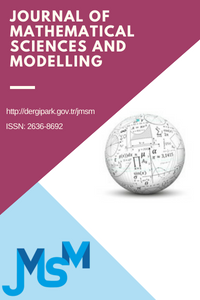Diagnosis of axial displacement in transformer windings using finite element analysis
Diagnosis of axial displacement in transformer windings using finite element analysis
Transformer is one of the main equipment in the power system and power quality of the power system mainly depends on the working of the power transformer. Leakage reactance is one of the main parameters of the transformer. The design of the transformer has a significant impact on the leakage reactance of the transformer. The mechanical strength of the transformer mainly depends on the leakage reactance of the transformer. This paper investigates the leakage reactance of the transformer in normal conditions and during the axial displacement of the high voltage and low voltage windings using finite element analysis. Normal results of finite element analysis method are also compared with the experimental short-circuit test. Results show that leakage reactance of the transformer exponentially proportional to the displacement of the windings. It is observed that with the axial displacement of the $ 6\% $ of the winding, leakage reactance increased by $ 10\% $. Results also show that effect of the axial displacement in high voltage and low voltage winding is almost same.
Keywords:
Leakage Reactance, Finite Element Analysis, Energy method Axial Displacement, Transformer Mechanical strength, Transformer Modelling,
___
- [1] Dawood K., Alboyaci B., Cinar M.A., and Sonmez O., ”Modelling and Analysis of Transformer using Numerical and Analytical Methods”, 18th International Symposium on Electromagnetic Fields ISEF 2017, Lodz, Poland, 14–16 Sept. 2017.
- [2] Heathcote M., J & P Transformer Book, Thirteenth Edition, Elsevier Ltd., 2007.
- [3] Secue J.R. and Mombello E., ”Sweep frequency response analysis (SFRA) for the assessment of winding displacements and deformation in power transformers” Elsevier, Electric Power System Research, Vol. 78, pp. 1119-1128, 2008.
- [4] Karsai K., Kerenyi D. and Kiss L., Large Power Transformers, Hungary, Elsevier, 1987.
- [5] Leon F. D., Semlyen A., ”Efficient Calculation of Elementary Parameters of Transformer”, IEEE Transactions on Power Delivery, Vol. 7, pp. 376-383, 1992.
- [6] Prieto R., Garsia O., and Aluo P. ”Study of 3-D Magnetic Components by Means of Double 2-D Methodology”, IEEE Transactions. on Industrial Electronics, Vol. 50(1), pp. 183-192, 2003.
- [7] Tomczuk B., ”Three-Dimensional Leakage Reactance Calculation and Magnetic Field Analysis for Unbounded Problems”, IEEE Transaction On Magnetic, Vol 28(4), pp. 1935-1940, 1992.
- [8] Rao S., The Finite Element Method in Engineering. Bytterworth-Heinmann, 1999, pp 45-85.
- [9] Baobin L., and Wei Z. Analysis and Online Testing of the Transformer Winding Deformation. Procedia Engineering Elsevier, Vol. 29, pp. 306-310, 2012.
- [10] Karimifard P., and Gharehpetian G.B., ”A new algorithm for localization of radial deformation and determination of deformation extent in transformer windings”, Electric Power Systems Research, Vol. 78(10), 2008: 1701-1711.
- [11] Rao S. S., The finite element method in engineering: Elsevier ; 2010
- [12] Dawood K., Cınar M.A., Alboyacı B. and Sonmez O., ”Efficient Finite Element Models for Calculation of the No-load Losses of the Transformer”, International Journal of Engineering & Applied Sciences, Vol. 9(3), pp.11-21, 2017.
- [13] Santhi S., Jayashankar V., ” Continual assessment of winding deformation during a short circuit test”, IEEJ Transactions on Power and Energy, Vol. 126(7), pp.712-713, 2006.
- [14] Dawood K., Alboyaci B., Cinar M.A., Sonmez O., ”A new method for the calculation of leakage reactance in power transformers”, Journal of Electrical Engineering & Technology, Vol. 12(5), pp. 1883-1890, 2017.
- [15] Saadat J. A., Karim A. ”The Study of Magnetic Flux Shunts Effects on the Leakage Reactance of Transformers via FEM”, Majlesi Journal of Electrical Engineering, Vol. 4(3), 2010.
- ISSN: 2636-8692
- Yayın Aralığı: Yılda 3 Sayı
- Başlangıç: 2018
- Yayıncı: Mahmut AKYİĞİT
Sayıdaki Diğer Makaleler
Evolution equations in Fréchet spaces
Said ABBAS, Amaria ARARA, Mouffak BENCHOHRA, Fatima MESRİ
Diagnosis of axial displacement in transformer windings using finite element analysis
Kamran DAWOOD, Mehmet AYTAC ÇINAR, Bora ALBOYACI
Bouteraa NOUREDDİNE, Slimane BENAİCHA
İbrahim YUSUF, Ramatu İdris GATAWA, Kabiru SULEİMAN
Boolean hypercubes and the structure of vector spaces
A new class activation functions with application in the theory of impulse technics
